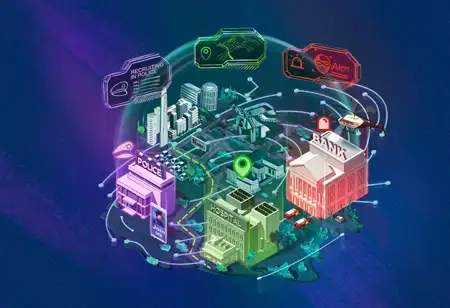THANK YOU FOR SUBSCRIBING
Be first to read the latest tech news, Industry Leader's Insights, and CIO interviews of medium and large enterprises exclusively from Gov CIO Outlook
THANK YOU FOR SUBSCRIBING

By
Government CIO Outlook | Friday, October 29, 2021
Stay ahead of the industry with exclusive feature stories on the top companies, expert insights and the latest news delivered straight to your inbox. Subscribe today.
Law enforcement has undergone tremendous change due to new technologies, methodologies, and ideas.
FREMONT, CA: Law enforcement has undergone substantial change due to new technologies, methods, and ideas. Across the country, police and law enforcement agencies are pioneering new ideas, adapting to changing situations, and incorporating insights from officers and community partners. The innovations reshaping law enforcement's future begin with emerging technology that enables new operational ideas, enabling the interventions and connections necessary to keep society safe.
Frequently Used Law Enforcement Technologies
Connected devices and body cameras for police: Connected devices (IoT solutions) have the potential to significantly improve law enforcement and public safety by providing irreplaceable evidence and detecting criminal activities in real time.
Although the first recorded usage of body cameras occurred in about 2005, they were not widely used in the United States until roughly a decade later, primarily to promote openness and police accountability. This widespread adoption enables officers to document factual and objective information about each occurrence to aid in future actions and to assist in developing public confidence since they have been proved to improve officer behavior.
According to reports, police in America shoot and kill more than 1,000 people each year. These police aggression patterns involving firearms directly affect and erode community members' confidence in law enforcement. Enter IoT-enabled weapons, such as The Blueforce Connected Firearm Solution, which track how and when a firearm is used, thereby addressing issues of accountability and transparency. The capacity to monitor police enforcement officials' whereabouts and activities at all times and their willingness to use these devices should help alleviate tensions between communities and their local law enforcement leaders.
Applications for mobile devices: There is an app for almost anything nowadays, including law enforcement and policing. These mobile apps serve a variety of objectives; in addition to assisting officers in remaining situationally aware, they improve the precision and ease with which tasks, reports, and evidence are created, reported, and collected.
Certain apps were built with the express purpose of assuaging public anxiety. For instance, the Riverside Police Department established a free app to provide residents with access to the latest news, images, videos, events, alerts, and crime information. Additionally, it features two-way communication and options for residents to provide anonymous tips and file police reports.
Mobile applications alleviate some of the constraints formerly faced by law enforcement leaders on the ground. Numerous programs, including New World ShieldForce and Samsung DeX, expand computer-aided dispatch functions to smartphones, allowing dispatchers to track and backup officers regardless of their location. Additionally, these features help police maintain a higher level of situational awareness by presenting important information in real-time.
I agree We use cookies on this website to enhance your user experience. By clicking any link on this page you are giving your consent for us to set cookies. More info



